Category: Arts & Entertainment
Wilma Mankiller’s Struggle to Bring Water to Cherokee Community Now in Film
– Native News Network
VIRGINIA BEACH, VIRGINIA – During the early 1980s, the small rural community of Bell, Oklahoma gained national attention when Wilma Mankiller led the struggle to build an 18 mile waterline to bring fresh drinking water to the small town.
This story is now on film in “The Cherokee Word for Water.” Filmed in Oklahoma in 2011, the film will have its Virginia premiere Sunday, June 9, at the Virginia Museum of Contemporary Art. The Virginia premiere is part of the SkyFest Native American Festival taking place at the 17th Street Park at the Virginia Beach oceanfront.
“The Cherokee concept of “gadugi” means working together to solve a problem. That’s just what happened in the tiny town of Bell 30 years ago. Cherokee Wilma Mankiller, along with Charlie Soap, led an all volunteer workforce which had endured a legacy of being dehumanized and dispossessed of their land and identity in creating a nearly 20 mile long waterline to provide, for the first time for most, fresh running water and indoor plumbing to homes in Bell”
said group spokeswoman and head female dancer for SkyFest, Emelie Jeffries.
“The success of this project inspired the Cherokee nation as a whole and gave Native people the inspiration to take back control of their lives and life circumstances. It sparked a movement of similar self help projects that continues across the Cherokee nation to this day and led to Wilma Mankiller becoming the first female principle chief of the Cherokee Nation in 1985. The film highlights cultural assets of courage, resiliency and determination of Native people and seeks to reshape public perception of them. It’s an important film for those of all ages to see,”
added Jeffries.
Mankiller served as Chief of the Cherokee Nation from 1985-1995. During her administration, the tribe constructed several health clinics and re-established its judicial system, tribal marshal service and a tax commission. She met with Presidents Reagan, Bush and Clinton. She was married to Charlie Soap, her partner in leading the waterline project and the film’s director and a producer, from 1986 until her death from cancer in 2010.
Kimberly Norris Guerrero plays Wilma Mankiller. Moses J. Brings Plenty portrays Charlie Soap. Guerrero, a veteran of many television shows and films, is perhaps best known as a girlfriend of Jerry Seinfeld from the “Seinfeld” episode “The Cigar Store Indian.” Brings Plenty is also a veteran of both mediums, having appeared recently in “Cowboys vs. Aliens.” Deanna Dunagan, the Tony Award-winning actress from the play “August: Osage County” portrays Mankiller’s mother in the film.
“I’d like people to know more about Wilma and the hope and resilience in the Indian community,”
Soap said of the message that he hopes “The Cherokee Word for Water” will convey.
“Wilma thought then that too many people would come out to Cherokee Nation lands and only see poor people and bad conditions, and not that there were people ready to change their situations if just given the opportunity. That’s what she did. I think it’s important to leave a legacy for her. I never realized the importance of a legacy until she was gone and so many people told me how they looked up to her and that she made them believe, “If she can do it, we can too.” It’s a powerful feeling that she’s left with us, and plenty of people tell me that they still feel her presence here today,”
he added.
Tulalip’s 4th Annual Stickgame Tournament
Saturday-Sunday: Tulalip Tribes Stickgame Tournament. An exciting event with games and vendors. The games are located on 27th Ave, across from the Boom City Swap Meet and there is plenty of parking.
The games will be going on all night and tomorrow. There are 120 teams in the tournament. Stickgames are a long tradtion that has been revived over the years and brought back to Tulalip in order to, “bring families and friends from all tribes together in this long running tradition,” said Tulalip Tribal member Nessie Hatch.
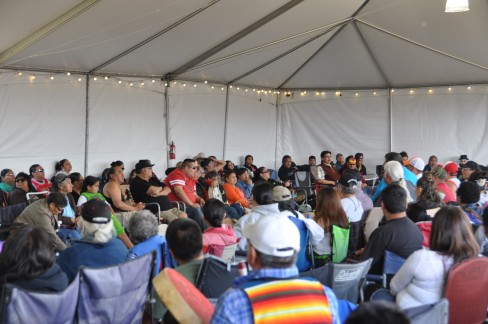
Photo by Monica Brown

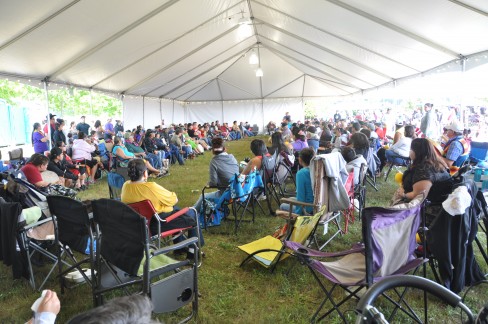
Pow Wow, Games, Shopping and Storyelling at Tulalip this weekend
Saturday-Sunday: 22nd Annual Veterans Pow Wow at the Tulalip Resort Convention area. Also take time to enjoy the vendors and food in the outside tent.
Saturday-Sunday: Tulalip Tribes Stickgame Tournament. An exciting event with games and vendors. The games are located on 27th Ave, across from the Boom City Swap Meet.
Fundraising Sale: Parent Committee of Tulalip Early Head Start Fundraising Gym Sale, Saturday June 2 8am-5pm, Old Tulalip Elementary School Gym
Boom City Swap Meet – Open Saturday and Sunday. www.boomcityswapmeet.com
Storytelling at the Hibulb Cultural Center, Sunday, June 2: Lois Langrebe, Language teacher and artist, in the Longhouse Room, 1pm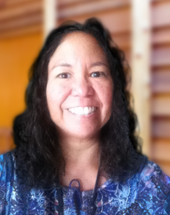
Free seminars at Tulalip Cabela’s
Free upcoming seminars at the Tulalip Cabela’s include:
June 1: 11 a.m., Puget Sound Crabbing Essentials; gear, bait, line, and where to go.
June 2, 1 p.m. in the Gun Library: Shotgun Cleaning 101. Keep your firearms in like-new condition.
June 3: 6-7:30 p.m., Advanced Tips and Techniques for Archers; pre-registration suggested by calling 360-474-4880.
June 8: 10 a.m. to 4 p.m., Family Outdoor Adventure Day; free kids fishing pond, live music by The Bobbers, youth archery shoot, decoy painting, kids calling contest, laser shoot, BB gun shooting, face painting, gold panning and more.
Every Saturday, June 8 to Nov. 9: 11 a.m., Responsible Firearm Ownership.
Every Saturday, June 15 to Aug. 24: 1 p.m., Learn to Fly Fish. Each class will present the basics of fly fishing including techniques, gear, casting, fly selection and more. Pre-registration is suggested by calling 360-474-4880. For a complete schedule of upcoming free classes and events, call that number or go to www.cabelas.com/tulalip.
DOT adds webcam for Skagit River bridge construction
 Published: May 30, 2013
The Bellingham Herald
Published: May 30, 2013
The Bellingham Herald
MOUNT VERNON, Wash. — Washington Department of Transportation officials have installed a webcam at the site of the collapsed Interstate 5 bridge on the Skagit River so residents can monitor the progress on repairing it.
Nearly all the materials for a temporary bridge have arrived at the site and DOT hopes to meet Gov. Jay Inslee’s goal of spanning a collapsed section by mid-June, officials said. The National Transportation Safety Board is still finishing its site investigation, The Skagit Valley Herald reported.
A section of the bridge collapsed May 23 after a girder was struck by an oversize load on a truck. Traffic currently is detoured through Mount Vernon and Burlington
.A temporary bridge will replace the 160-foot section that fell into the water. That will reopen two lanes in each direction. A permanent replacement this fall should restore the bridge.
To get to the DOT webpage that also includes traffic cameras for the George Hopper Road exit and Highway 20, click here. The webcams should automatically reload every 2 minutes, DOT said.
Photo shows, book trace the story of the American Indian Movement
The American Indian Movement (AIM) stopped making headlines long ago, but it’s still making history.
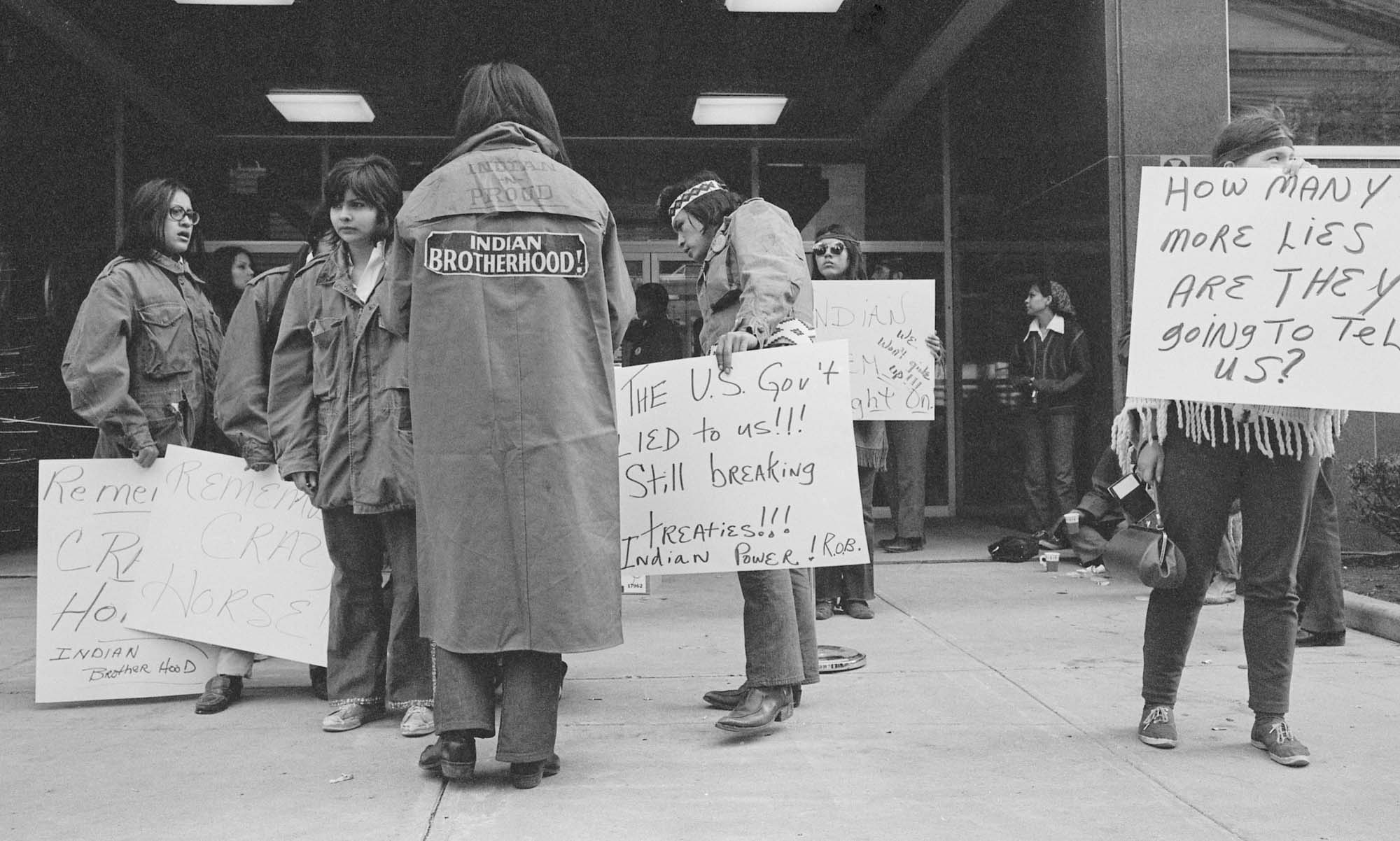
Last year the organization began planning an interpretive center to house the photos, artifacts and stories that document AIM’s importance in restoring Indian civil rights, identity and pride. This spring a sample of that material is showcased in two exhibitions: a powerful, emotionally stirring show of about 100 photos plus memorabilia (posters, buttons, articles) at All My Relations Gallery in south Minneapolis and a smaller display of about 25 photos downtown at the Mill City Museum. Accompanying them is a handsome new book, “We Are Still Here: A Photographic History of the American Indian Movement,” from the Minnesota Historical Society Press.
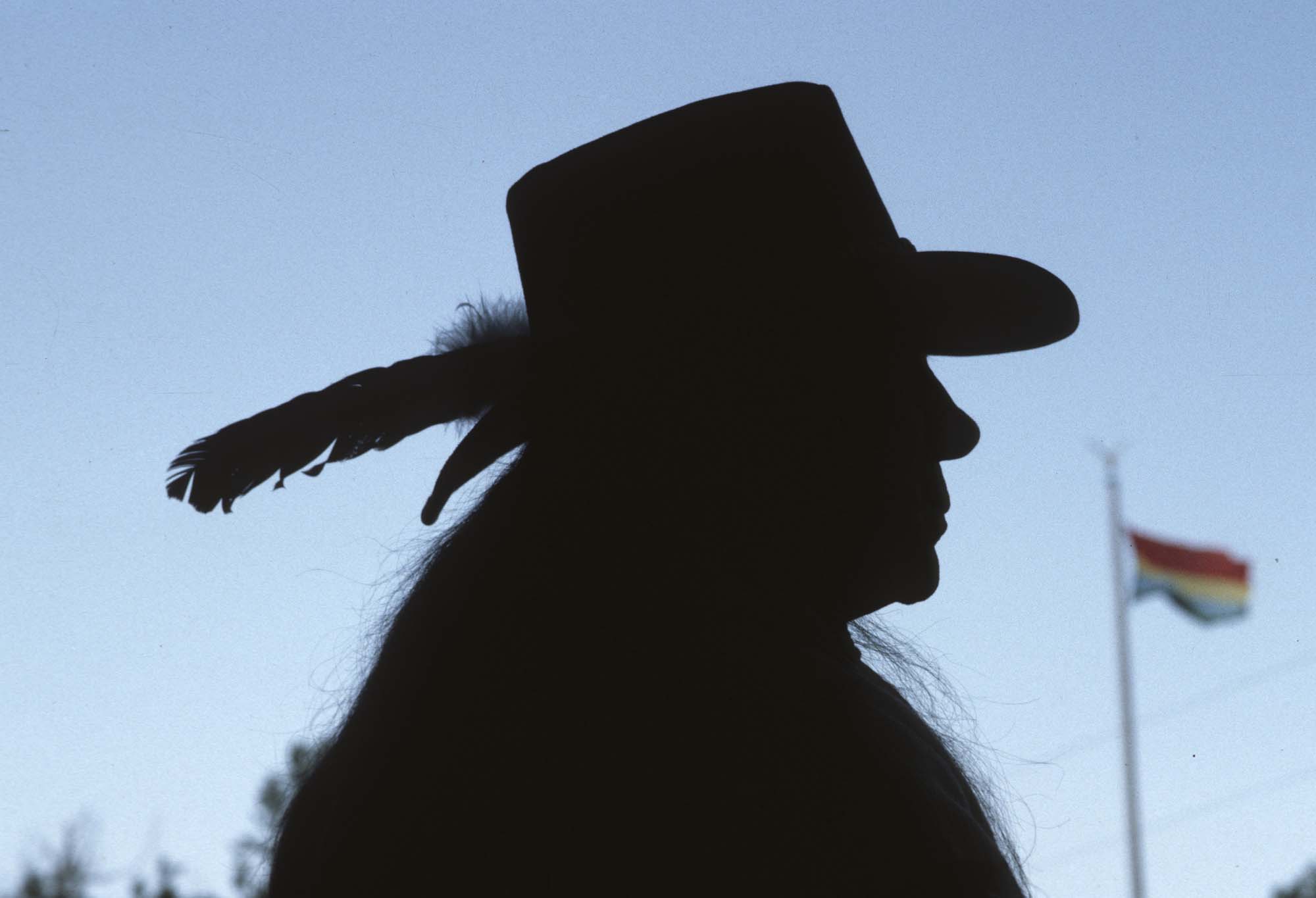
Founded in Minneapolis in 1968, AIM was ambitious in its goals and fortunate in its leaders. Responding to endemic poverty, racism, police harassment and centuries of broken treaties, the fledgling organization set out to reclaim native pride, much as the civil rights movement was doing for black Americans. Its goals encompassed everything from improved housing, education and employment for urban Indians to encouraging native people to assume responsibility and engage in civic affairs.
Now, 45 years later, its legacy is especially visible on revitalized Franklin Avenue in south Minneapolis, where banners announcing an American Indian Cultural Corridor flutter on new light poles, and Indian businesses and civic organizations (Northland Native American Products, Minnesota Chippewa Tribe, Native American Community Development Institute) anchor an increasingly upscale neighborhood.
Tough times documented
There was nothing upscale in the lives of urban Indians in the 1960s, as documented in “I’m Not Your Indian Anymore” at All My Relations. The earliest black-and-white images show the poverty and danger — junked cars, rickety stairs, holes in floors — in which Indians often struggled to raise their families. AIM’s early marches, rallies and confrontations were recorded at Minneapolis City Hall, the village of Wounded Knee, S.D., and at the Bureau of Indian Affairs in Washington, D.C.
The emotional power of the shows comes in the unvarnished authenticity and you-are-there candor of the grainy images, including a wedding, a funeral, and a clutch of camouflage-clad U.S. military men arriving at Wounded Knee. In a particularly striking picture by Kevin McKiernan, an elderly woman named Cecilia Jumping Bull proudly clutches a folded U.S. flag and photos of two young men, presumably her sons, in military uniforms. A bullet hole disfigures one of the portraits, prompting her remark: “The government shoots my house; they have no respect for me.”

Other images document police beatings and harassment, protests at a Wisconsin power dam that had flooded tribal lands, and a long 1972 march to Washington known as the Trail of Broken Treaties Caravan. But AIM had broader goals, too, as evidenced in Roger Woo’s 1975 photo of kids being tutored at the Red School House, a St. Paul school for Indian youths, and of a boy being cared for at an Indian Health Board Clinic.
The earliest black-and-white pictures were taken by a variety of photographers, most notably Woo and McKiernan. Most of the color images, including a preponderance of those in the book, are by Dick Bancroft, who became the movement’s unofficial photographer.
Complex conflicts
Not surprisingly, the back story of many of the photos is complex. Official tribal leaders of the time often sided with federal bureaucrats against AIM, trying to discredit it as a ragtag group of “urban Indian” agitators, even though it enjoyed support of many traditional elders.
The magnitude of AIM’s reach became apparent in 1977 when an international delegation of indigenous people took their concerns to the United Nations in Geneva, Switzerland. Among the delegates was Winona LaDuke, then an 18-year-old Harvard student who had researched uranium and coal mining on Indian lands. “I was in awe of everybody,” she recalls in the book. “I’d never been exposed to all this cool political leadership.”
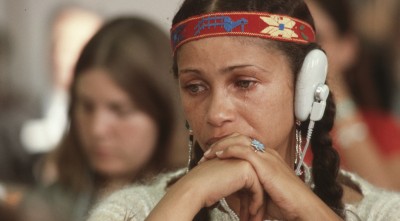
The 13-point resolution the group presented became the basis of a U.N. Declaration on the Rights of Indigenous People that was approved, finally, 30 years later.
Like all history, AIM’s story will doubtless be debated and interpreted for years to come. These compelling exhibitions and the engrossing, meticulously researched book are an essential foundation for that discussion.
I’m Not Your Indian Anymore
What: An impressive photographic history of the American Indian Movement (AIM), featuring images by Dick Bancroft, Roger Woo and Keri Pickett.
When: 11 a.m.-6 p.m. Mon.-Fri., 11 a.m.-3 p.m. Sat. Ends June 29.
Where: All My Relations Gallery, 1414 E. Franklin Av., Mpls. www.allmyrelationsarts.com or 612-235-4970.
Admission: Free.
Mary Abbe • 612-673-4431
Veteran’s Pow Wow and Stick Game Tournament, this weekend at Tulalip
Indigenous Experience NW 2013, Celebrating Native Arts and Culture
Portland, Oregon, will be alive with Indigenous Peoples culture today. Native artists, storytellers, musicians and dancers will gather for a celebration of indigenous communities unlike any other in the Portland area.
The Indigenous Experience NW 2013, which is being held at the Scottish Rite Center, 709 Southwest 15th Avenue, aims to bring Native culture and traditions to the masses to foster appreciation for Native art in a city where, organizers say, it is underrepresented. The event’s theme is “The Medicine Within.”
Matika Wilbur: Indian Enough Photography Exhibit Opens in Ohio
Indian Country Today Media Network
As ICTMN reported in January, Matika Wilbur has embarked on a three-year project to photograph peoples and cultures that are not only alive but are thriving and a force in American life.
Wilbur, a 28-year-old Swinomish/Tulalip woman, hit the road November 28 on Project 562, an undertaking to photograph people from every federally recognized indigenous nation in the United States. When completed, the project will result in a book, exhibitions, lecture series, website and a curriculum.
Now, along her journey, the exhibit Matika Wilbur: Indian Enough has opened at River House Arts in Perrysburg, Ohio. The exhibition, featuring Wilbur’s photographic work, will run until June 10.
To help support Project 562 or learn more about the project, visit MatikaWilbur.com or the Project 562 Kickstarter page.
Read more:
Photographer Matika Wilbur’s Three-Year, 562-Tribe Adventure

Read more at http://indiancountrytodaymedianetwork.com/2013/05/07/matika-wilbur-indian-enough-photography-exhibit-opens-ohio-149246













